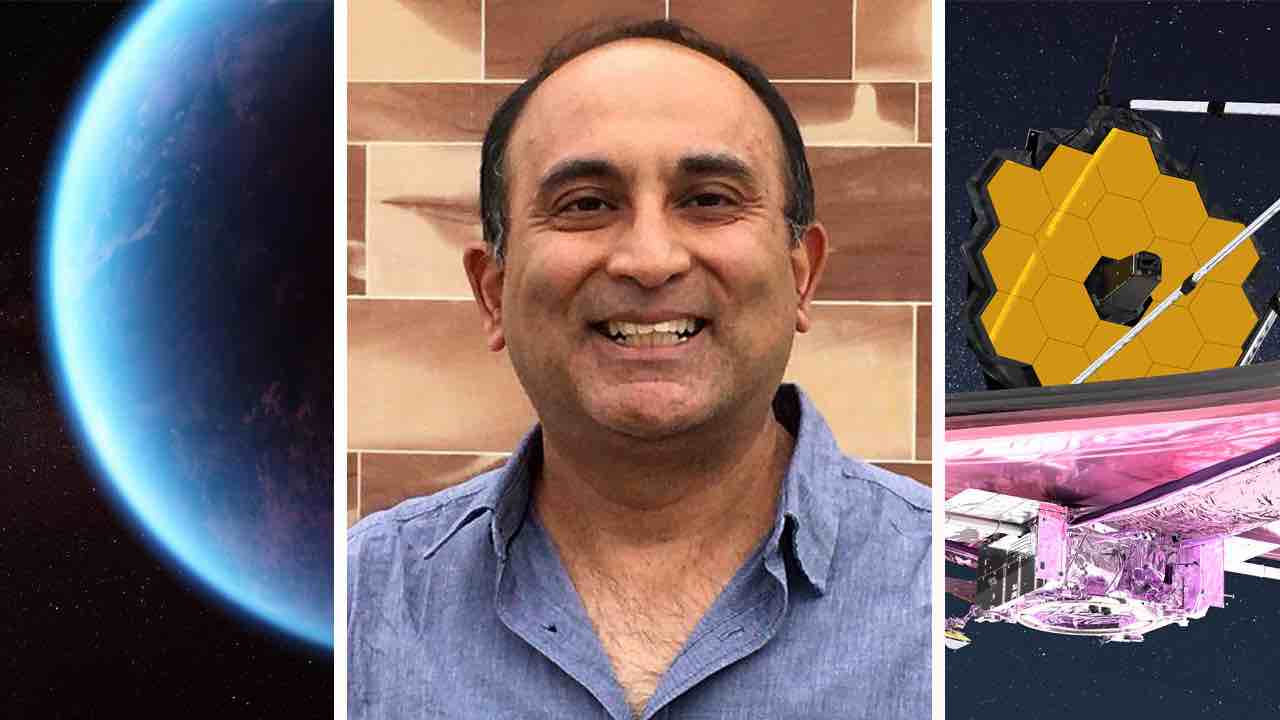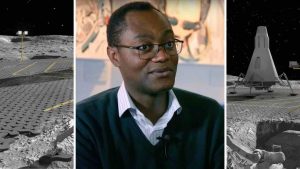
We met Subhajit Sarkar, a University Lecturer and Astrophysicist at Cardiff University (Wales, United Kingdom). He is involved in many space missions, some of which are ESA’s Ariel, NASA’sEXCITE and NASA/ESA/CSA James Webb Space Telescope. His goal is to study the atmospheres of exoplanets, the planetary processes in temperate regime sub-Neptunes and gas giants etc.
Subhajit Sarkar is also a member of the Cardiff University team that studied the exoplanet K2-18b. The latter orbits the red dwarf star K2-18 in the habitable zone and lies 120 light-years from Earth. Recently, the James Webb Space Telescope discovered methane and carbon dioxide in atmosphere of K2-18b. To read the official research article click HERE.
How were you able to identify methane and carbon dioxide in the atmosphere of k2-18b? Is the exoplanet’s atmosphere is composed by hydrogen, methane, and carbon dioxide?
We looked at the parent star, K2-18, which is a red dwarf in the constellation of Leo, with the James Webb Space Telescope (JWST) in January and June of this year. We can’t see the planet directly so we use an indirect technique called “transit spectroscopy” to extract the planet spectrum. This involves splitting the star light into lots of wavelengths (think of a rainbow) and then following the brightness at each wavelength with time as the planet crosses over the star’s disc. The planet has a ring of atmosphere around it, and so when the crossing happens, both the planet and the atmosphere block a small fraction of the star light. The fraction of light blocked will vary a little at each wavelength, and by measuring this we can effectively trace out the spectrum of the absorbing molecules in the atmosphere.
Once we obtained the atmospheric spectrum, we used a computer to generate lots of possible atmospheric models with model spectra that we could compare to the observed spectrum. We then basically found the best fitting model spectrum and looked at what molecules went into producing that model. This told us that methane and carbon dioxide are very likely to be in the atmosphere of the planet.
Planets like K2-18 b are called “sub-Neptunes” and are somewhere in size between the Earth and Neptune. We don’t have such planets in our own solar system. The estimated densities of such planets mean they have to have a substantial hydrogen-rich atmosphere. So we think K2-18 b has a hydrogen-dominated atmosphere where methane and carbon dioxide each make up about 1% of the atmosphere.
Why does the presence of dimethyl sulfide (DMS) make you think that life could exist? Could DMS be evidence of an ocean?
There is a tentative detection of DMS in the spectrum, but we need more observations to verify this. DMS is produced on the Earth almost exclusively by microbial life (phytoplankton and bacteria), so it is considered a biosignature gas on the Earth. If the DMS is indeed confirmed we would still need to make sure there are no plausible non-biological explanations for it in the case of K2-18 b before we break open the champagne.
We think K2-18 b might have an ocean layer (a “Hycean” world) but this is not dependent on the presence of DMS. This is actually inferred from the specific pattern of gases we see: CO2, methane and notably, the absence of ammonia. Previous theoretical studies of atmospheric chemistry predicted such a pattern for sub-Neptunes that might have a liquid water ocean under a shallow hydrogen-rich atmosphere.
Is it true that ESA’s Ariel mission will study around 1000 exoplanets? Why is it so important to study the exoplanets’ atmospheres?
Yes. The plan is to study around 1000 exoplanets of many different types, and obtain their atmospheric spectra. This will be the largest survey of exoplanet atmospheres ever performed. There is a lot we do not know about how planets form and what kind of atmosphere a planet will ultimately develop. Studying the atmospheres tells us a lot about what these planets are like and what they are made of as can we get direct compositional information from the spectra. Also, by studying a large sample of planets we can find patterns and trends which can help us understand the factors that control how atmospheres work and how different types of planets form. We are ultimately seeking a “theory of everything for planets” that could predict the types of planets and planetary systems that would form from basic initial conditions. The Ariel data will advance that quest.
What do you love most about your job? What emotions do you feel when you study very distant planets that could host life?
I’m very lucky to have been able to follow my passion and work in the field of exoplanets. I’ve always been fascinated by space, and I love that as a university lecturer I can make my living researching and teaching in this area. I also love the fact that exoplanets and the search for life in the Universe are subjects that capture the public imagination and can inspire an interest in science and astronomy. It is great to be able to work on projects with others who share that passion and play a part in advancing our knowledge of these fascinating areas.
When I look out at the night sky, I wonder which of the many stars out there has a planet with life on it. It is a tantalizing mystery at the moment, but I’m hoping in our lifetimes we will discover the first life off the Earth. At that moment, everything will change in the way we see the Universe and our place in it. We can look out at the darkness, point to a star, and say… we are not alone.
- Cover image: Subhajit Sarkar (central photo: bbc.com); side photo: Amanda Smith (first image) / NASA GSFC/CIL/Adriana Manrique Gutierrez (second image)



